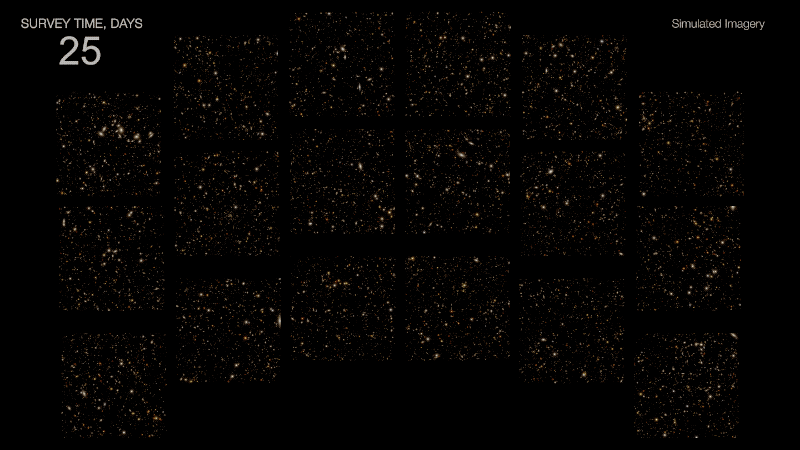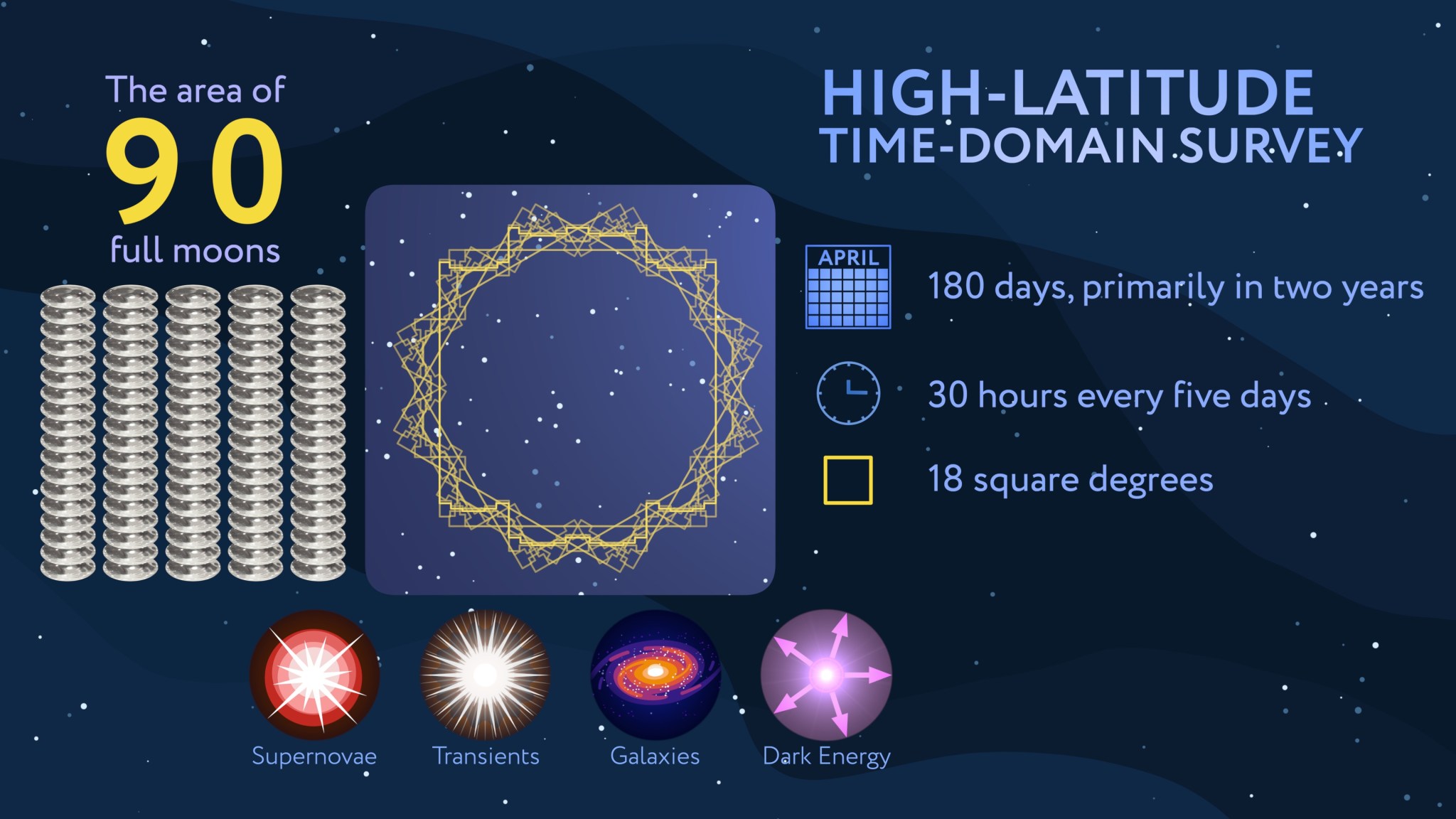Scientists predict one of the major surveys by NASA's upcoming Nancy Grace Roman Space Telescope may reveal around 100,000 celestial blasts, ranging from exploding stars to feeding black holes. Roman may even find evidence of some of the universe's first stars, which are thought to completely self-destruct without leaving any remnant behind.

Cosmic explosions offer clues to some of the biggest mysteries of the universe. One is the nature of dark energy, the mysterious pressure thought to be accelerating the universe's expansion.
"Whether you want to explore dark energy, dying stars, galactic powerhouses, or probably even entirely new things we've never seen before, this survey will be a gold mine," said Benjamin Rose, an assistant professor at Baylor University in Waco, Texas, who led a study about the results. The paper is published in The Astrophysical Journal.
Called the High-Latitude Time-Domain Survey, this observation program will scan the same large region of the cosmos every five days for two years. Scientists will stitch these observations together to create movies that uncover all sorts of cosmic fireworks.
Chief among them are exploding stars. The survey is largely geared toward finding a special class of supernova called type Ia. These stellar cataclysms allow scientists to measure cosmic distances and trace the universe's expansion because they peak at about the same intrinsic brightness. Figuring out how fast the universe has ballooned during different cosmic epochs offers clues to dark energy.

In the new study, scientists simulated Roman's entire High-Latitude Time-Domain Survey. The results suggest Roman could see around 27,000 type Ia supernovae-about 10 times more than all previous surveys combined.
Beyond dramatically increasing our total sample of these supernovae, Roman will push the boundaries of how far back in time we can see them. While most of those detected so far occurred within approximately the last 8 billion years, Roman is expected to see vast numbers of them earlier in the universe's history, including more than a thousand that exploded more than 10 billion years ago and potentially dozens from as far back as 11.5 billion years. That means Roman will almost certainly set a new record for the farthest type Ia supernova while profoundly expanding our view of the early universe and filling in a critical gap in our understanding of how the cosmos has evolved over time.
"Filling these data gaps could also fill in gaps in our understanding of dark energy," Rose said. "Evidence is mounting that dark energy has changed over time, and Roman will help us understand that change by exploring cosmic history in ways other telescopes can't."
But type Ia supernovae will be hidden among a much bigger sample of exploding stars Roman will see once it begins science operations in 2027. The team estimates Roman will also spot about 60,000 core-collapse supernovae, which occur when a massive star runs out of fuel and collapses under its own weight.
That's different from type Ia supernovae, which originate from binary star systems that contain at least one white dwarf - the small, hot core remnant of a Sun-like star - siphoning material from a companion star. Core-collapse supernovae aren't as useful for dark energy studies as type Ias are, but their signals look similar from halfway across the cosmos.
"By seeing the way an object's light changes over time and splitting it into spectra - individual colors with patterns that reveal information about the object that emitted the light-we can distinguish between all the different types of flashes Roman will see," said Rebekah Hounsell, an assistant research scientist at the University of Maryland-Baltimore County working at NASA's Goddard Space Flight Center in Greenbelt, Maryland and a co-author of the study.
"With the dataset we've created, scientists can train machine-learning algorithms to distinguish between different types of objects and sift through Roman's downpour of data to find them," Hounsell added. "While searching for type Ia supernovae, Roman is going to collect a lot of cosmic 'bycatch'-other phenomena that aren't useful to some scientists, but will be invaluable to others."
Hidden Gems
Thanks to Roman's large, deep view of space, scientists say the survey should also unearth extremely rare and elusive phenomena, including even scarcer stellar explosions and disintegrating stars.






